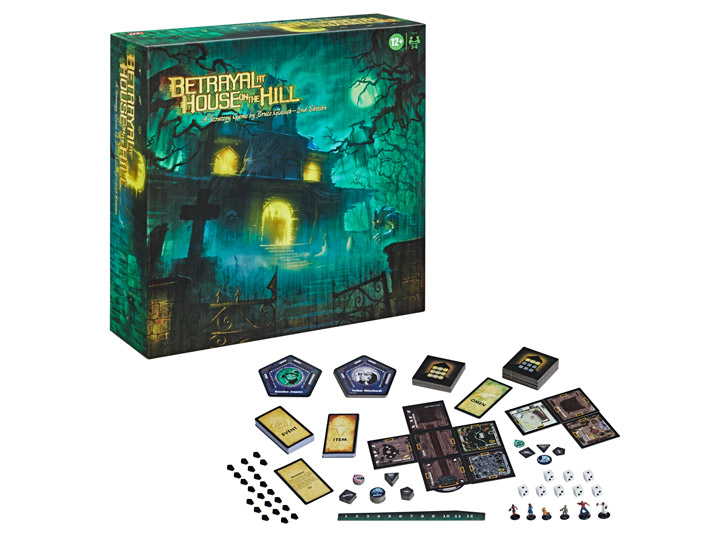Never Bored With Board Games!
Betrayal at House on the Hill
Difficulty Level: 3
Play Time: 45-90 minutes
Number of Players: 3-6
Recommended age: 12+
Betrayal at House on the Hill (Betrayal) is a two-part game consisting of exploration, survival, and you guessed it, betrayal. In the first part of the game, all players work together as a team to explore as much of a haunted house as possible. As the game progresses, players will explore more and more of the house by discovering tiles. Some rooms can be helpful—maybe they have an item, or a trait boost, while others can hurt you or, after some time, start phase two: the Haunt. When the Haunt starts, one person will be selected as the traitor and then works against all other players in order to win. Essentially a one-versus-all.
Despite the extensive rulebook and occasionally tedious Haunt setup, Betrayal is the most engaging game you will ever play; it feels as though the game is telling you a story. From event cards to the actual Haunt, you will feel immersed in the story. This is one of my all-time favorite games, so I highly recommend it.
Unlike games such as Catan, where you often narrate your turns, or Wingspan, where everyone is intently focused on strategies, Betrayal is a slower game which allows for a unique social element.
Setup takes little time, since all you have to do is let each player select a character tile, put the room cards in a pile, and lay out the landing tiles and the event, item, and omen decks. At the beginning of the game, each player will get to choose from the six characters the one they would like to play. Each character has four traits: speed, strength, intelligence, and wisdom, while their respective levels may be different. For example, one character may have an above-average speed, but a low might, while another could have a low wisdom and a high might. When a character’s trait score is reduced to the skull symbol at the bottom of their trait score tracker during the Haunt, that player is eliminated from the game. There are three landings, the foyer, the basement, and the second floor (which you can move to from the foyer).
On a turn, a player gets to move a number of tiles equal to their speed trait. To explore a room you simply move out of a pre-existing doorway so that your character is not sitting on any room tiles. Then, take the next tile from the tile deck that corresponds to the floor you are currently on and place it under your character so that as many doors as possible match up with other doors. When you explore a room, there are four possibilities: 1) nothing happens, 2) there is an event, 3) you find an item, or 4) there is an omen.
If you find a room with an event, take the top card of the event pile and do all actions stated on the card. All event cards have a little story on them that add to the persona of the game. If you find an item, you take an item card from the deck. They can help you with multiple things, such as increasing a trait score, rolling extra attack damage, or even healing you. If you find an omen, take an omen card and make a Haunt roll. All omens help and hurt you at the same time (like increasing one trait score while lowering another). To make a Haunt roll, roll six dice and check to see if the number shown is lower than the number of omens discovered so far in the game. Each die has two of the numbers zero, one, and two on them. If the Haunt roll succeeds, the Haunt begins.
When the Haunt begins, check the Haunt table for which player becomes the traitor. From then on, the designated player is the traitor. I won’t spoil any of the Haunts, but each one generally has these features: The traitor controls some amount of monsters, the traitor tries to kill the other players or complete their master plan, and the players attempt to stop the traitor. The best thing about Betrayal is that there are over 50 different Haunts in the base game, so each and every play will be unique in some way. In fact, because of the way Betrayal was designed, all games will be different.
Winston Spreitzer ('24) is delighted to be returning as a staff writer to The Forum this year. In the past, he has written articles about rock climbing,...




















































